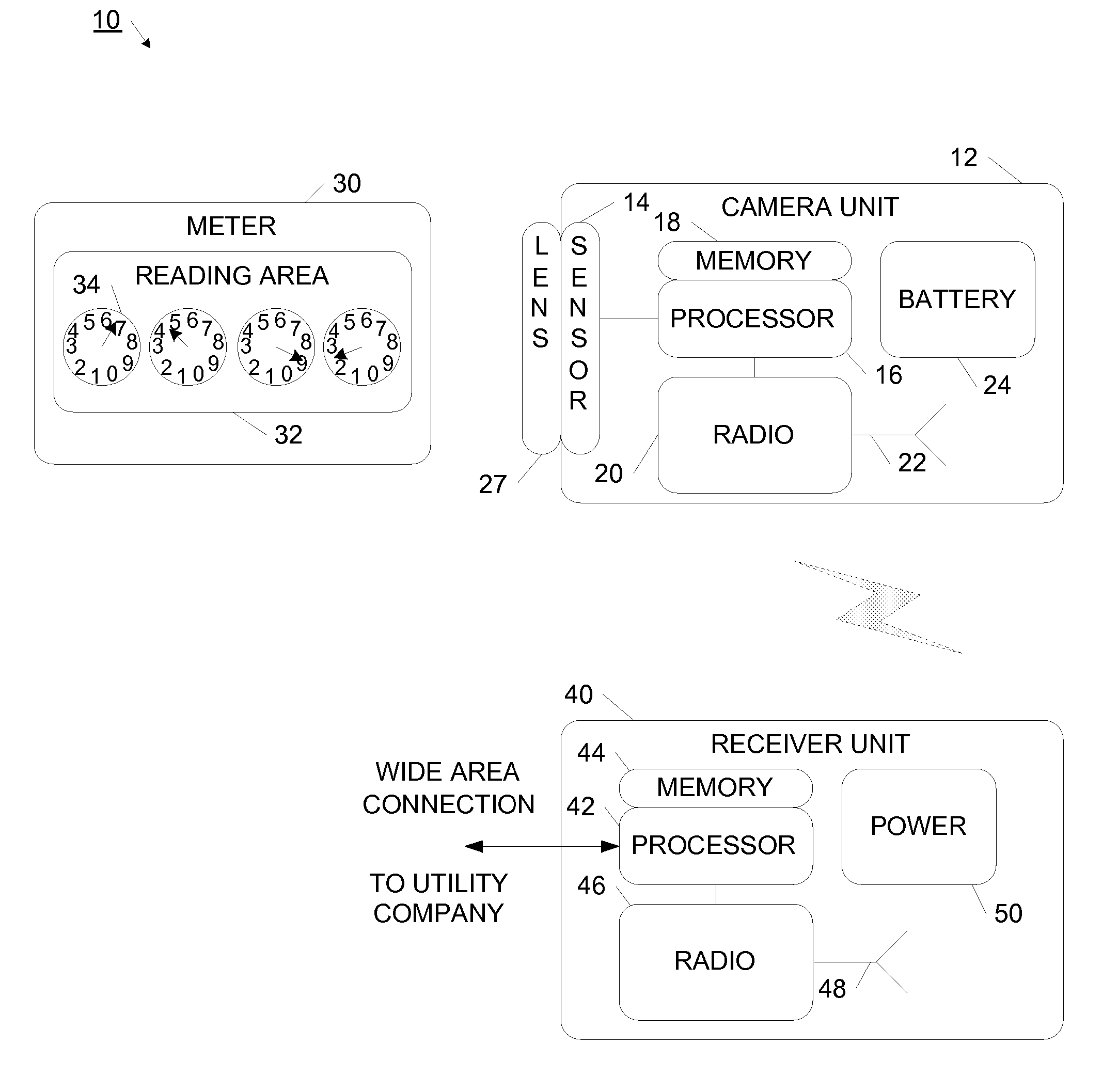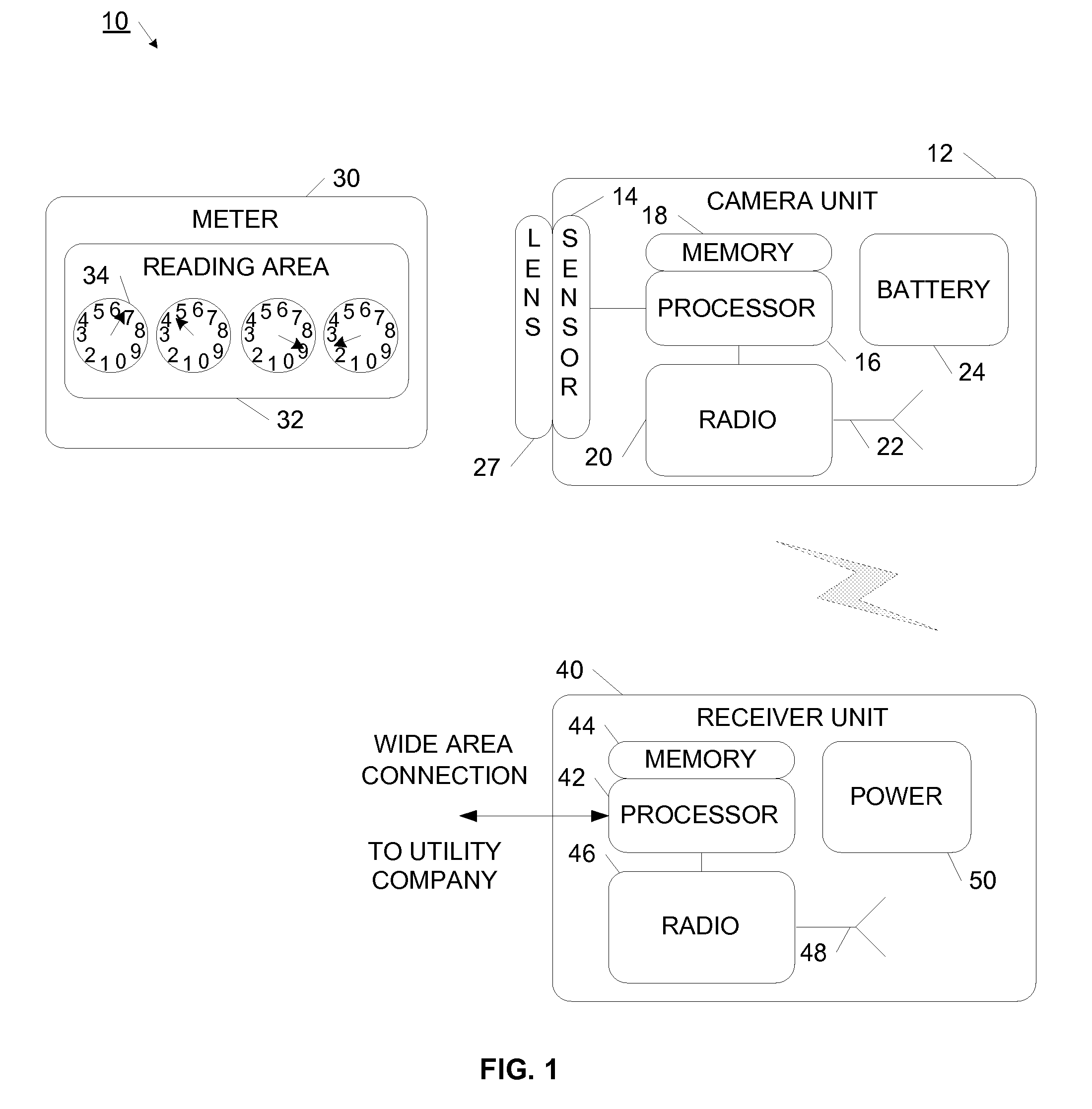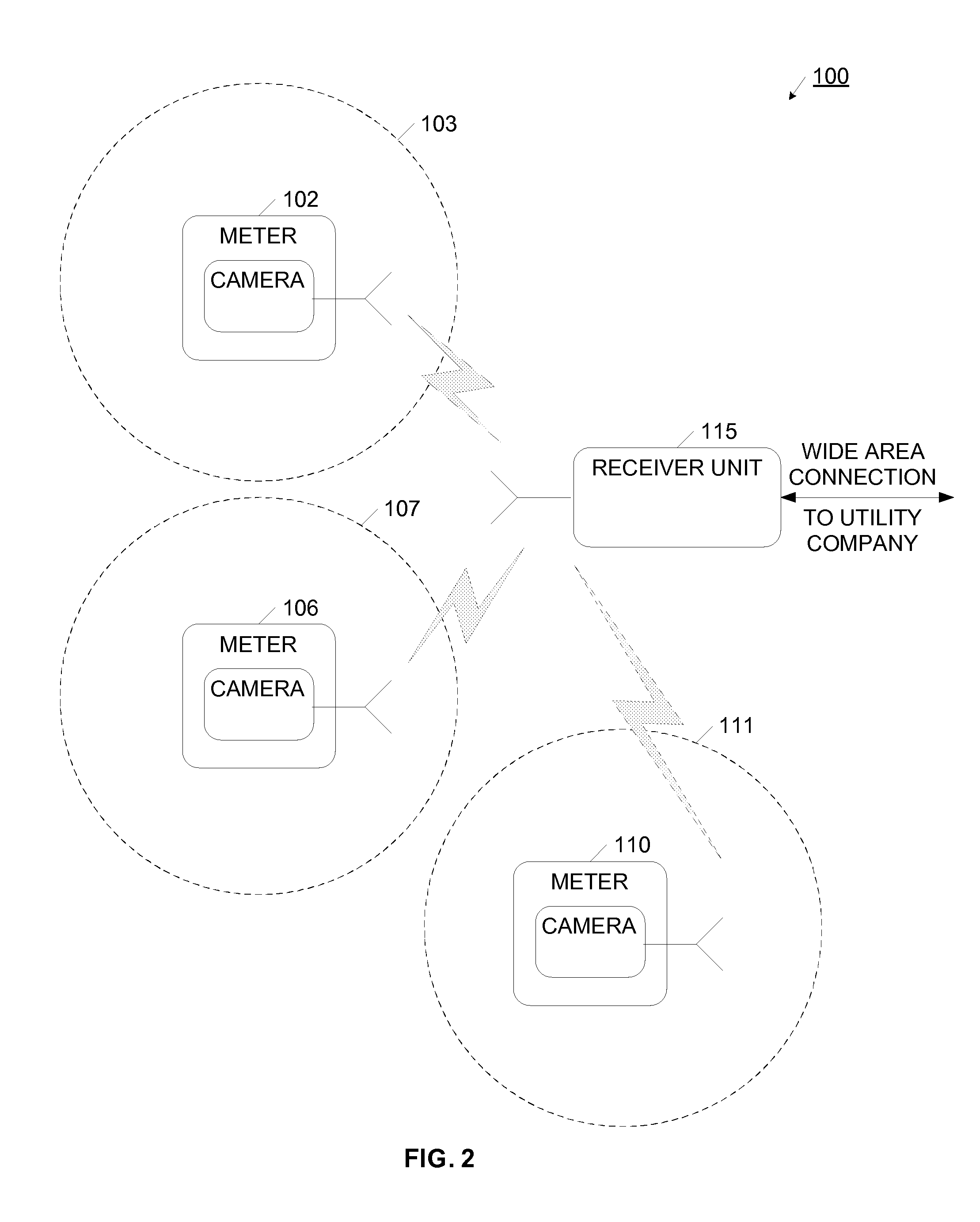Remote meter reader using a network sensor system and protocol
a network sensor and remote meter technology, applied in the field of automatic meter reading, can solve the problems of limited use of remote imagers, limited applications for remote imaging, and meter-readers may be subject to dog bites, human attacks, or other dangers, and achieve efficient and accurate remote meter reading, cost, accuracy, and safety. the effect of prolonging the operation li
- Summary
- Abstract
- Description
- Claims
- Application Information
AI Technical Summary
Benefits of technology
Problems solved by technology
Method used
Image
Examples
Embodiment Construction
[0017] Referring now to FIG. 1, an automated meter reading system is illustrated. System 10 generally comprises an imaging camera unit 12 attached to or otherwise coupled to a meter 30. In one arrangement, the camera includes a lens or lens system and a CCD or CMOS imager. From time to time, camera unit 12 takes an image of the reading area 32 of meter 30. Reading area 32 has dials, such as dial 34, or a digital display for presenting utility usage information. The image is captured by camera unit 12, and communicated back to a receiver unit 40. In one example, receiver unit 40 is a handheld device used by a human meter reader. In this way, a person driving in a vehicle or walking a distance away from the meter can remotely and wirelessly read the meter. In another example, the receiver unit is in the residential or commercial unit for meter 30, and wirelessly receives image data. The image data may then be communicated through a wide area connection back to the utility company. In ...
PUM
 Login to View More
Login to View More Abstract
Description
Claims
Application Information
 Login to View More
Login to View More - R&D
- Intellectual Property
- Life Sciences
- Materials
- Tech Scout
- Unparalleled Data Quality
- Higher Quality Content
- 60% Fewer Hallucinations
Browse by: Latest US Patents, China's latest patents, Technical Efficacy Thesaurus, Application Domain, Technology Topic, Popular Technical Reports.
© 2025 PatSnap. All rights reserved.Legal|Privacy policy|Modern Slavery Act Transparency Statement|Sitemap|About US| Contact US: help@patsnap.com



